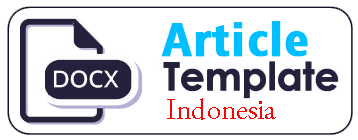Study on the use of comic media by education officer in elementary school of DKI Jakarta Province
DOI:
https://doi.org/10.54849/monas.v4i2.110Keywords:
learning, learning media, comicsAbstract
Mathematics learning basically has abstract characteristics, as well as tiered concepts and principles. This is the reason why many students have difficulty in learning mathematics. In order to make students easier understand the material being taught, learning method need to be supported with learning media. To find out the benefits of using comics media in Mathematics learning in Elementary Schools, a study on the benefits of using comics media in Mathematics learning with a case study of 4th grade students of SD Negeri Rawa Badak Utara 11 was conducted. The study was conducted through a comparative test of two groups of studens involving educational ASN (teacher) grade 4 SD Negeri Rawa Badak Utara 11. To find out the parents' perception of the use of comics media in learning Mathematics, a questionnaire was also given to parents of students who participated in learning with comics media. The results show that the difference in the value of the post-test and pre-test from the group of students who used comic media is 16.56, while from the group of students who used the lecture media, the difference in the score of the post-test and pre-test is 14.19. Mathematics learning using comic media also shows that 84% of students get scores above the Minimum Completeness Criteria (KKTP) while learning with the lecture method only results in 78% of students getting scores above the KKTP. From the evaluation of the questionnaire related to parents, it was stated that learning mathematics using comic media made it easier for students to understand mathematics learning. In addition, by learning mathematics using comic media, there is an increase in students' interest in learning mathematics.
Downloads
Published
Issue
Section
License
Authors who publish in this journal agree to the following terms:
- Authors retain copyright and grant the journal right of first publication with the work simultaneously licensed under a Creative Commons Attribution-NonCommercial-ShareAlike 4.0 International License that allows others to share the work with an acknowledgement of the work's authorship and initial publication in this journal.
- The journal allows the authors to hold the copyright without restrictions and to retain publishing rights without restrictions.
- Authors can enter into separate, additional contractual arrangements for the non-exclusive distribution of the journal's published version of the work (e.g., post it to an institutional repository or publish it in a book), with an acknowledgement of its initial publication in this journal.







